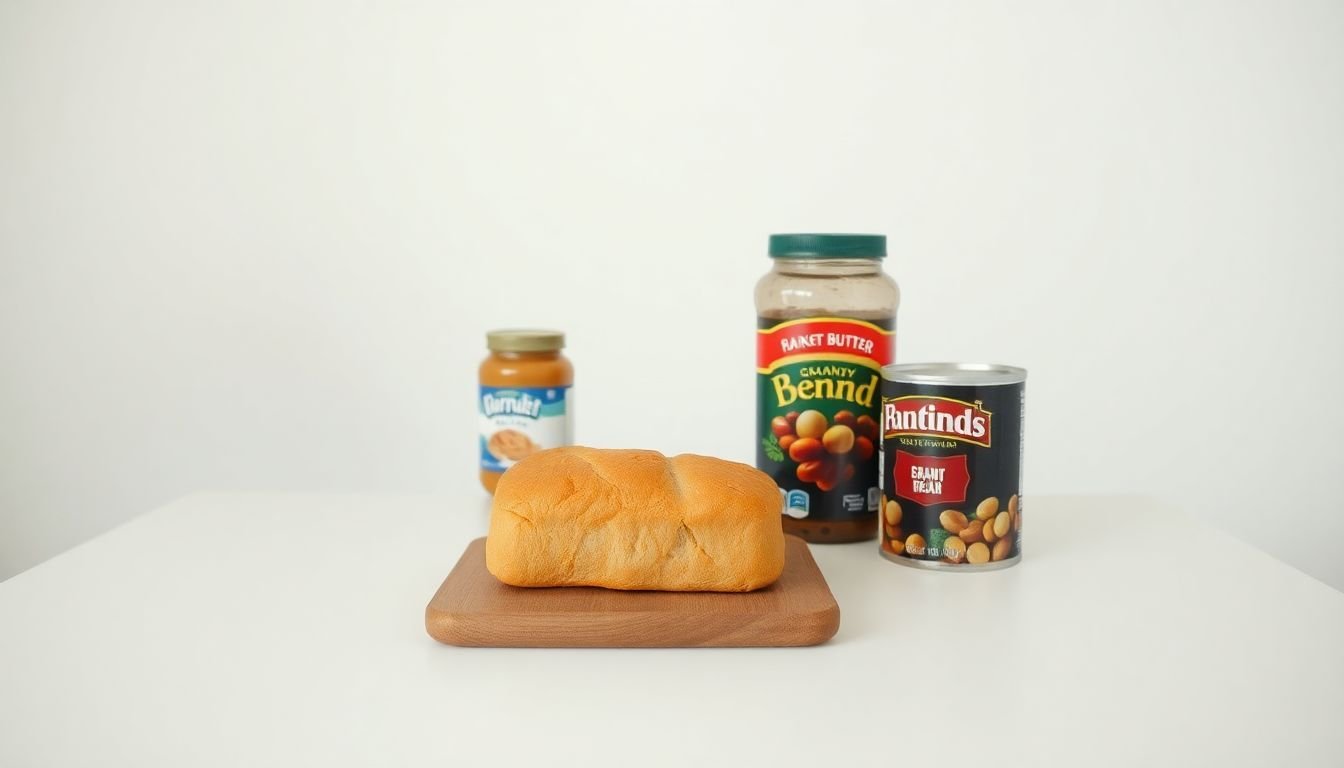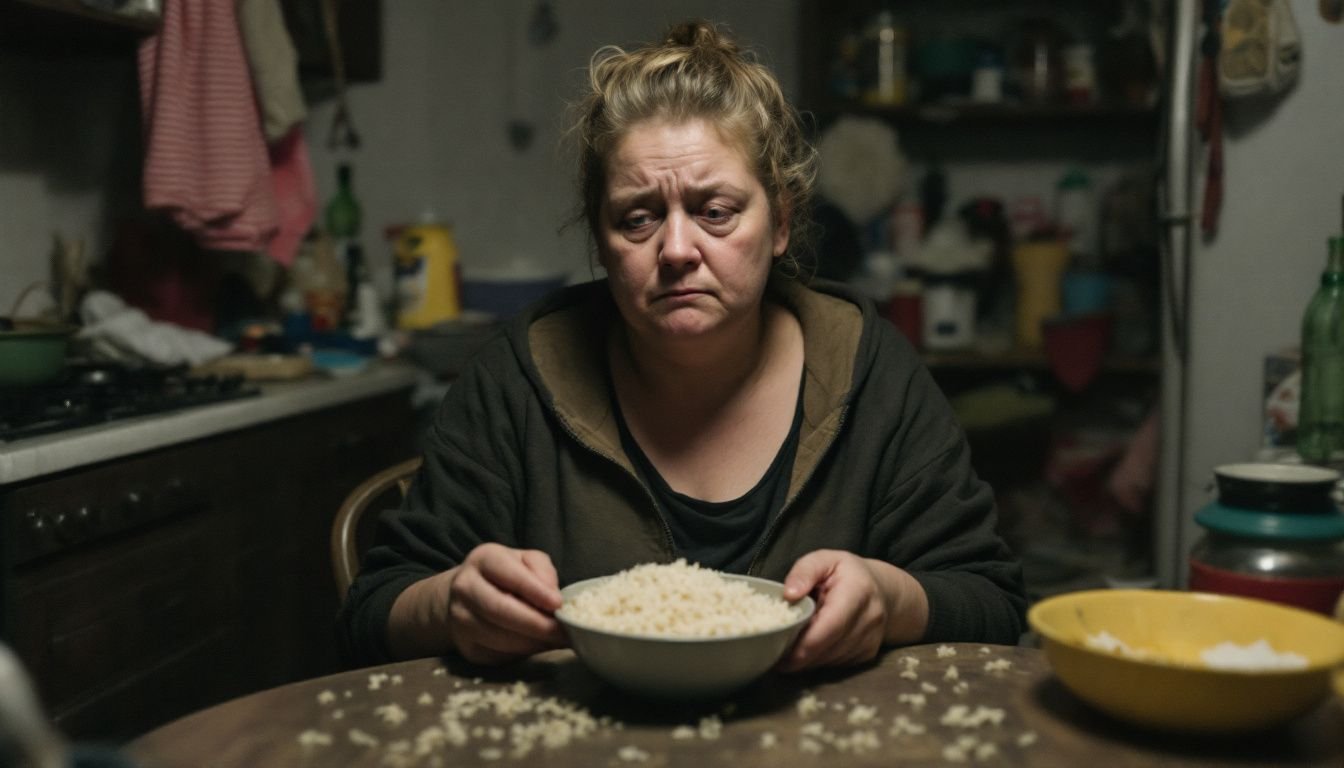Living on a minimal food budget is no child’s play. Perhaps you’ve attempted to minimize your grocery expenses and discovered it’s more challenging than you anticipated. I can completely empathize since I’m presently in the midst of the Live Below The Line challenge.
This implies managing with a very modest sum for meals daily. The focus is to gain a genuine understanding of what severe poverty truly feels like.
During this challenge, I’ve become more aware of how difficult it really is when you don’t have a range of good food options because you’re financially constrained. For instance, are you aware that 1.4 billion people face this hardship every day? This fact profoundly affected me.
In the present blog post, I’m going to guide you through my journey of this enlightening experience and discuss how it has altered my perception of poverty, both here in the UK and worldwide.
Perhaps you’ll gain some useful advice or feel inspired to participate in initiatives addressing these vast problems.
So, let’s get started.
My Experience with the Live Below The Line Challenge

I tried living on a tiny food budget for the Live Below The Line Challenge. It made me eat very simple meals every day.
Limited food budget
Living on a limited food budget is tough. I had to make every penny count. This meant buying the cheapest items at the grocery store. Often, I could only afford pasta and some vegetables.
Breakfast turned into a simple slice of toast or just plain oats. For dinner, it was more pasta with maybe a hint of sauce if I was lucky.
Living this way opened my eyes to what poverty really feels like.
I missed protein in my diet because meat and even beans were too expensive. Snacks? Out of question. Every meal had to be planned so that nothing went to waste. Living on a strict food budget made me realize how hard it must be for people facing extreme poverty every day.
Current food intake
I eat very simple meals now. For breakfast, I might have an egg that costs $0.65 or a small piece of cheese for $0.30. Sometimes, I get to add a banana that’s $0.29 to my meal if I save enough from other days.
Milk is also in my diet; it’s about $0.25 for the amount I use each day. These foods don’t give me a lot of energy, but they’re what I can afford right now.
Eating like this has made me think more about what food costs and what nutritional value it brings to the table—no pun intended! My choices are limited and finding enough protein is tough without spending more money than I’m allowed in this challenge.
Lack of protein sources
Finding protein on this tight budget is hard. My peanut butter ran out yesterday, and that was my main source. Protein-rich foods are too expensive for me now. This makes me feel weak and less able to do things.
I tried to look for other cheap protein sources but had no luck. With limited options, I couldn’t keep my energy up. It’s tough not getting enough protein every day.
Physical Impact of the Challenge
This challenge showed me how tough things can get. Eating so little made it hard to keep up with my daily run. My body just didn’t have enough energy, which was very frustrating.
Inability to complete scheduled run
I was training hard for a marathon, pushing myself every day. But on day four of the Live Below The Line Challenge, I couldn’t even finish my usual 3.5-mile run. My body felt heavy and slow, like it just didn’t have the energy to keep going.
Hitting the wall isn’t just a runner’s term; it’s a real struggle when you’re not eating enough.
Even though I wanted to push through, my legs wouldn’t cooperate. This challenge has shown me how crucial food is for our bodies – especially when doing something as demanding as marathon training.
It was a wake-up call about how much we rely on healthy food to keep us moving forward.
Frustration about lack of energy
Living on a tiny food budget made me really tired. As a fitness teacher for yoga and cycling, I need lots of energy. But this challenge left me with very little power to do my job well.
It was hard not being able to run as planned. This made me feel weak and upset because I could not stay active.
Eating less also meant less brain power for other tasks. Simple things took longer to do. Without good food like lean meats or nuts, keeping up with my usual pace became impossible.
My students noticed I wasn’t myself during classes at the gym which added to my stress. This experience opened my eyes to how crucial proper nutrition is, not just for sports but for everyday life too.
Reflection on Food Scarcity
Thinking about food scarcity hit me hard during this challenge. Learning that 1.4 billion people face hunger made me see my own struggles in a new light. It’s shocking to understand that many can’t get enough healthy food.
This isn’t just about not finding your favorite snack at the store; it’s a deep issue where folks don’t have access to any nutritious options for meals, like fruits or whole grains.
They rely on places giving out free food or cheaper, less healthy choices, which isn’t right.
Places like food banks try to help, but they can only do so much without more support from all of us and better policies aimed at getting rid of poverty completely. Being hungry affects how well someone can work or learn—it touches everything in their life, making it harder for them to break out of poverty.
We should build a network strong enough to give everyone the basics they need for a decent lifestyle, including proper lunchtime meals that fuel their days properly.
The goal is clear:
Societal issue related to food insecurity
Food insecurity is a big problem around the world. In fact, 1.4 billion people do not have enough to eat every day. This means they can’t get healthy food like fruits and vegetables or good sources of protein.
Instead, they might only have junk food that doesn’t give their bodies what they need to stay strong and healthy.
I learned that many families rely on food banks just to make it through each week. These places help a lot, but there’s still so much we need to do to fight hunger and poverty everywhere.
It’s shocking that in today’s world, with all our advances, we still face such huge challenges in making sure everyone has enough decent food to eat.
1.4 billion people struggling with food insecurity
Living with food insecurity is hard. In the United States, 1.4 billion people face this problem every day. They find it tough to get enough food for themselves and their families. This means they often can’t give their kids the right kind of food that helps them grow strong and healthy.
Taking part in the Live Below The Line challenge opened my eyes to just how many people live in poverty and struggle to eat well. It’s not just about being hungry; it’s also about not being able to buy foods that are good for you.
Every day is a fight for these folks, trying to make ends meet while dreaming of a better future where they don’t have to worry about their next meal.
Inability to afford nutritious food options
I found out not everyone can buy healthy food. This made me think about the 1.4 billion people facing poverty in the UK and around the world. They struggle to get enough food every day.
For them, eating well is hard because good food costs more than they have.
I tried living on a very small budget for food like many poor people do. It was tough to find meals that were both cheap and full of nutrients. Most times, I had to choose cheaper options that weren’t so healthy because things like fruits, vegetables, and lean meats were too expensive for my budget.
Conclusion
I’m ready to finish the Live Below The Line challenge. It taught me a lot about food scarcity and poverty. Yet, I miss having enough energy and looking forward to good meals. Tomorrow brings my last day, and with it, dinner out and a glass of wine will be my reward.
This journey opened my eyes to the hardships many face daily. Sharing this experience helps raise awareness and might inspire others to help fight hunger too.
FAQs
1. What is the “Day Four Live Below The Line Challenge”?
The “Day Four Live Below The Line Challenge” is a poverty awareness initiative that aims to shed light on the reality of living in absolute poverty, like many of UK’s poorest people.
2. How does participating in this challenge help eradicate poverty?
Participation helps raise awareness about the struggle for decent work and survival faced by those living below the millennium development goal threshold. It encourages empathy and action towards eradicating poverty.
3. Can I engage with other participants during this challenge?
Yes, you can interact with other user profiles who are also taking part in the challenge through click-through links provided on various platforms hosting this event.
4. Is it common to feel overwhelmed during this challenge?
Absolutely! Many participants express feelings similar to “I’m over it” due to experiencing firsthand how difficult life can be for the poor, thereby increasing their understanding of UK poverty.
- Discover 10 Employee Health Benefits Cheaper Than Insurance In 2024 - November 9, 2024
- 4 Common Money Mistakes Parents Make And How To Avoid Them - November 9, 2024
- Mastering Your Retirement Strategy: Essential Steps For Financial Security - November 9, 2024
















